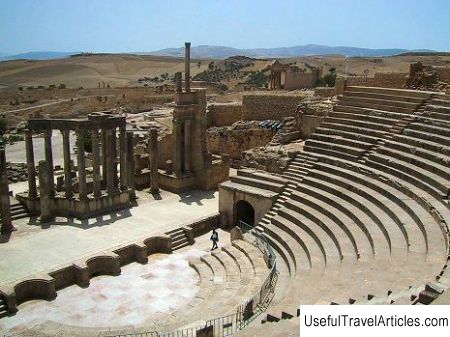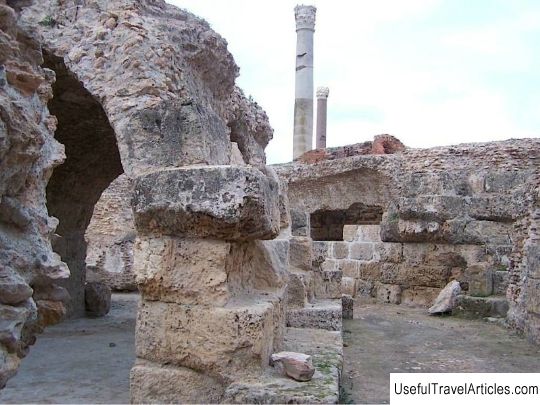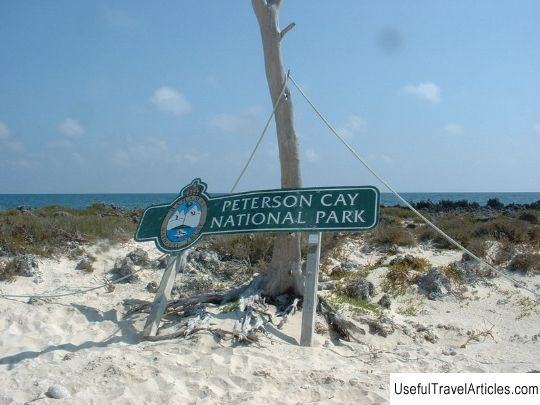Dougga description and photos - Tunisia

Dougga description and photo - Tunisia. Detailed information about the attraction. Description, photographs and a map showing the nearest significant objects. The title in English is Dougga. Photo and descriptionDugga is the ruins of an ancient city that has survived several ancient eras, replacing each other. The city is located about 4 hours from Hammamet and southeast of Carthage. According to historians, Dugga was built BC by the Berber tribe (translated from their language, `` dugga '' means `` pasture ''). Several hundred years after its founding, Dugga became the capital of the Numidian state, ruled by Massinis. In the II century BC, the city was captured by the Roman army. After the Romans, the city was under the control of Byzantium. After the Roman Empire collapsed, the city was captured by vandals, severely destroying it. Therefore, the city was able to avoid restructuring and reached us in an almost unchanged form, unlike large cities such as Carthage and Tunisia. Most of the most outstanding buildings were erected in the period from the 2nd century BC. to the 3rd century AD The most famous of these is the theater (168 BC), which hosts international festivals in summer. In the ruins of Roman villas, mosaics on the floors and walls have survived, while the foundations of fountains remain in the gardens and courtyards. The columns of the temples of Saturn, Juno Celeste (goddess Tanit in Punic mythology) have survived from Roman rule. Not far from the Temple of Saturn is the Capitol. There are two more temples on it - Jupiter (in the Greek mythology of Zeus) and the goddess Minerva. Previously, a statue of Jupiter was located on this site, but it has hardly survived to this day, apart from the foundation stones. Although the entire territory of Dugia has not yet been excavated, this place is already a UNESCO World Heritage Site. Most of the most prominent buildings date from the 2nd century BC. to the 3rd century AD The most famous of these is the theater (168 BC), which hosts international festivals in summer. In the ruins of Roman villas, mosaics on the floors and walls have survived, while the foundations of fountains remain in the gardens and courtyards. The columns of the temples of Saturn, Juno Celeste (goddess Tanit in Punic mythology) have survived from Roman rule. Not far from the Temple of Saturn is the Capitol. There are two more temples on it - Jupiter (in Greek mythology, Zeus) and the goddess Minerva. Previously, a statue of Jupiter was located on this site, but it has hardly survived to this day, except for the foundation stones.Although the entire territory of Dugia has not yet been excavated, this place is already a UNESCO World Heritage Site. Most of the most prominent buildings date from the 2nd century BC. to the 3rd century AD The most famous of these is the theater (168 BC), which hosts international festivals in summer. In the ruins of Roman villas, mosaics on the floors and walls have survived, while the foundations of fountains remain in the gardens and courtyards. The columns of the temples of Saturn, Juno Celeste (goddess Tanit in Punic mythology) have survived from Roman rule. Not far from the Temple of Saturn is the Capitol. There are two more temples on it - Jupiter (in the Greek mythology of Zeus) and the goddess Minerva. Previously, a statue of Jupiter was located on this site, but it has hardly survived to this day, apart from the foundation stones.Although the entire territory of Dugia has not yet been excavated, this place is already a UNESCO World Heritage Site.           We also recommend reading Kyle Game Park description and photos - Zimbabwe: Masvingo Topic: Dougga description and photos - Tunisia. |




